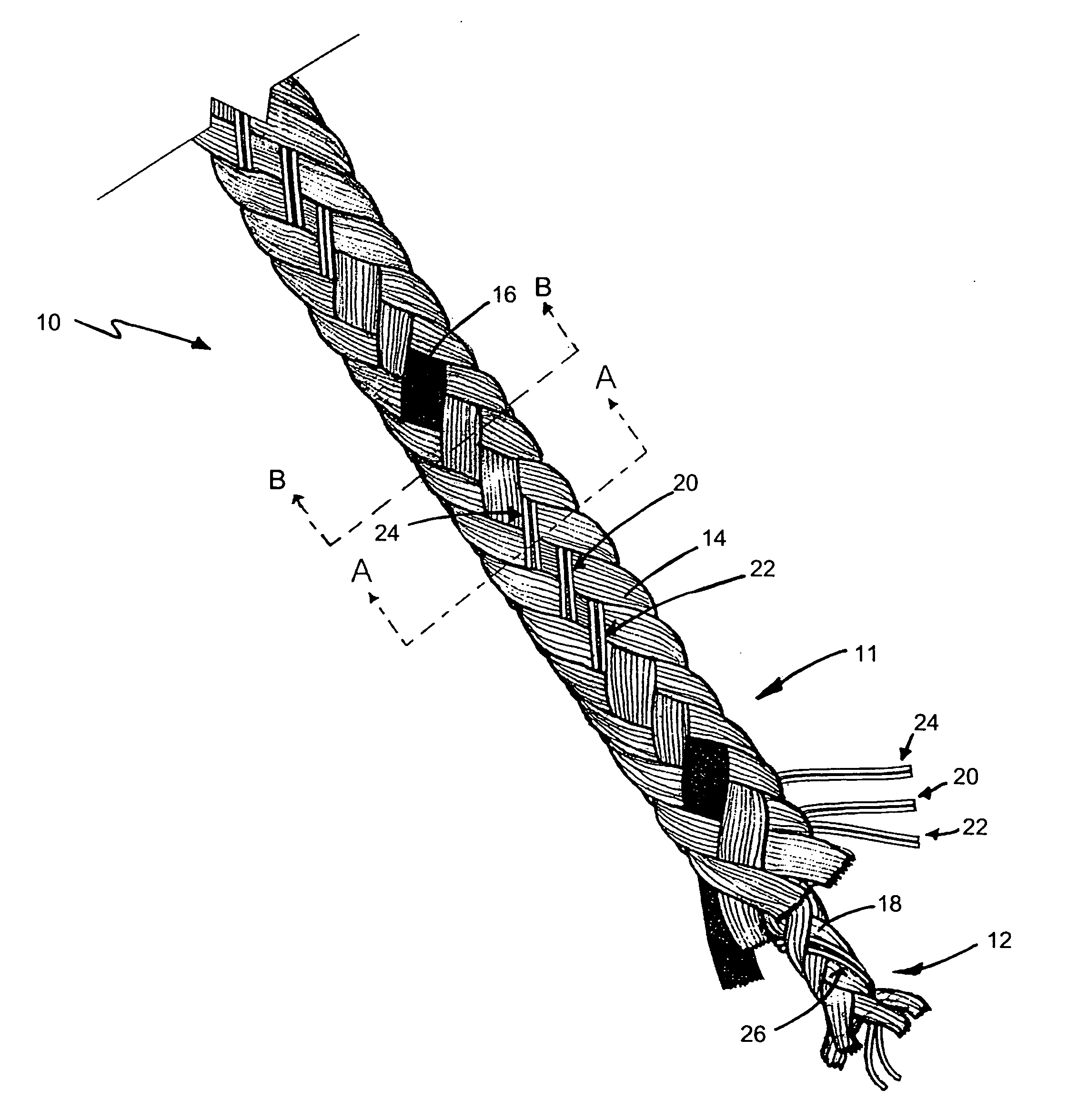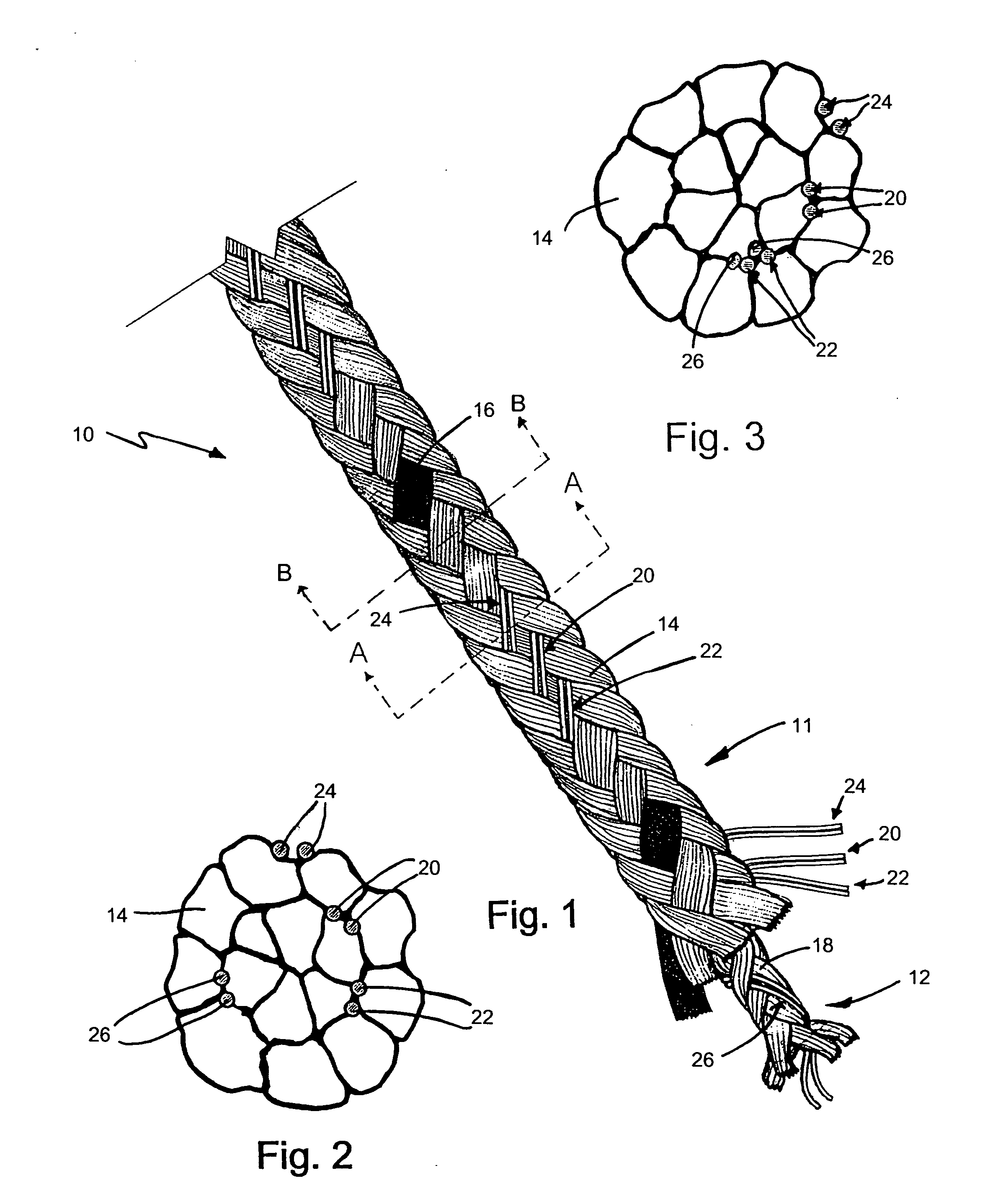Electric rope
a technology of electric rope and rope loop, which is applied in the field of rope, can solve the problems of difficulty in meeting all of the above criteria, requiring an expensive and complicated installation, and metal wire becoming broken
- Summary
- Abstract
- Description
- Claims
- Application Information
AI Technical Summary
Benefits of technology
Problems solved by technology
Method used
Image
Examples
Embodiment Construction
[0020] The present invention is an animal containment and deterrent in the form of an electrically conductive rope for an electric fence. As shown in FIG. 1, the rope 10 comprises a braided outer sheath 11 and a braided inner core 12, each comprising a combination of non-conductive elements 14, 16 and 18, and conductive elements 20, 22, 24 and 26. The braid allows the sheath conductive elements 20, 22 and 24 to be exposed intermittently on the exterior and interior surfaces of the outer sheath 11. Accordingly, the core conductive elements 26 periodically contact the sheath conductive elements 20, 22 and 24 appearing on the interior surface of the outer sheath. In this manner, the electric rope is able to withstand the effects of broken conductive sections in the outer sheath 11 since the conductive elements 26 of the inner core 12 bridge contacts throughout the rope. The outer sheath 11 serves to protect the conductive elements 26 of the inner core 12 from degradation due to weather...
PUM
| Property | Measurement | Unit |
|---|---|---|
| length | aaaaa | aaaaa |
| length | aaaaa | aaaaa |
| conductivity | aaaaa | aaaaa |
Abstract
Description
Claims
Application Information
 Login to View More
Login to View More - R&D
- Intellectual Property
- Life Sciences
- Materials
- Tech Scout
- Unparalleled Data Quality
- Higher Quality Content
- 60% Fewer Hallucinations
Browse by: Latest US Patents, China's latest patents, Technical Efficacy Thesaurus, Application Domain, Technology Topic, Popular Technical Reports.
© 2025 PatSnap. All rights reserved.Legal|Privacy policy|Modern Slavery Act Transparency Statement|Sitemap|About US| Contact US: help@patsnap.com


